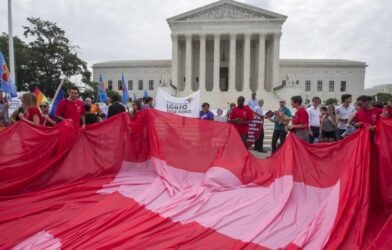When we think about Saudi Arabia and the united state, we often picture two vastly different worlds. One represents a deeply rooted Islamic heritage and a traditional lifestyle, while the other symbolizes modernity, democracy, and individual freedom. Comparing Saudi Arabia vs USA is not just about politics or geography—it’s about understanding how two contrasting nations operate, grow, and interact in a globalized world.
Geography and Climate
Saudi Arabia is located in the Middle East and is known for its vast deserts, arid climate, and dry landscapes. The majority of the country is covered by sand dunes and rocky terrain, making agriculture limited and water scarce. In contrast, the United States spans across North America with a wide variety of climates and landscapes—ranging from snow-covered mountains to tropical beaches, from forests to fertile plains. This geographic diversity contributes significantly to the differences in lifestyle and economy between the two countries.saudia arabia vs united state.
Government Structure
One of the key differences between the two countries lies in their systems of governance. Saudi Arabia is an absolute monarchy where power is concentrated in the hands of the royal family. The King serves as both the head of state and government. Political parties are banned, and public participation in decision-making is limited.
On the other hand, the United States operates under a federal democratic system with a clear separation of powers among the executive, legislative, and judicial branches. Citizens vote in regular elections to choose their leaders and have the right to freedom of speech, press, and assembly—rights that are restricted in Saudi Arabia.
Cultural Foundations
Saudi Arabian culture is deeply influenced by Islam, and many of its laws are based on Sharia (Islamic law). Religion plays a central role in daily life, from dress codes to public behavior. Traditions are strong, and family values are highly prioritized.
The United States, however, is known for its cultural diversity and relative openness. While Christianity is the dominant religion, the country is home to people from various religious and ethnic backgrounds. American culture emphasizes individualism, freedom of expression, and personal rights.
Economic Outlook
Saudi Arabia’s economy relies heavily on oil exports. As one of the world’s largest oil producers, it has used its natural resources to build a strong financial base. However, in recent years, the country has launched initiatives like Vision 2030 to diversify its economy, focusing on tourism, technology, and education.
The United States has a highly diversified and advanced economy. It is a global leader in technology, manufacturing, finance, and innovation. Silicon Valley, Wall Street, and Hollywood are just a few examples of America’s global influence across various sectors. While Saudi Arabia is working toward economic reform, the US already operates with a high level of complexity and competitiveness.
Education and Innovation
Education systems in both countries differ greatly. In the United States, there is a strong emphasis on higher education and research. American universities consistently rank among the top globally and attract students from around the world. Innovation and critical thinking are key components of the education system.
Saudi Arabia has made progress in modernizing its education sector. The government is investing in science, engineering, and technology, with many students receiving scholarships to study abroad. Though traditionally limited, access to education—especially for women—is expanding.
Women’s Rights and Social Change
This is one of the most noticeable contrasts. In the US, women enjoy equal rights and are present in all sectors, from politics to business. Gender equality is protected by law and widely accepted in society.
Saudi Arabia has historically had strict gender rules, but change is underway. Women can now drive, travel without male guardianship, and work in various sectors. While progress is happening, challenges remain, and societal attitudes continue to evolve slowly.
Entertainment and Social Life
Social life in the United States is often open, expressive, and fast-paced. People enjoy a wide variety of entertainment options—from concerts and festivals to movies and sports events. Social interactions are casual, and the media industry plays a huge role in shaping public opinion and culture.
Saudi Arabia, until recently, had limited public entertainment options. However, recent reforms have opened the doors to cinemas, music festivals, and public events. The entertainment industry is now seen as a growing sector that can boost the national economy and diversify cultural experiences.
Religious Freedom
Saudi Arabia is the birthplace of Islam and is home to two of the religion’s holiest sites—Mecca and Medina. Religious practices are deeply embedded in public life, and Islam is the only recognized religion. Non-Muslim religious practices are not openly allowed.
In contrast, the US prides itself on religious freedom. Citizens are free to practice any religion or none at all. This pluralism is protected under the Constitution and is a fundamental part of American identity.
Conclusion
When comparing Saudi Arabia vs USA, the differences are both vast and fascinating. These two countries reflect different philosophies, values, and historical paths. One is rooted in tradition and religion, while the other is built on democracy and diversity. Yet, both nations are influential on the world stage and are increasingly finding common ground in trade, education, and technological exchange.
Understanding these contrasts not only helps in global relations but also teaches us how societies can evolve, respect differences, and still collaborate for mutual growth.













Comments are closed